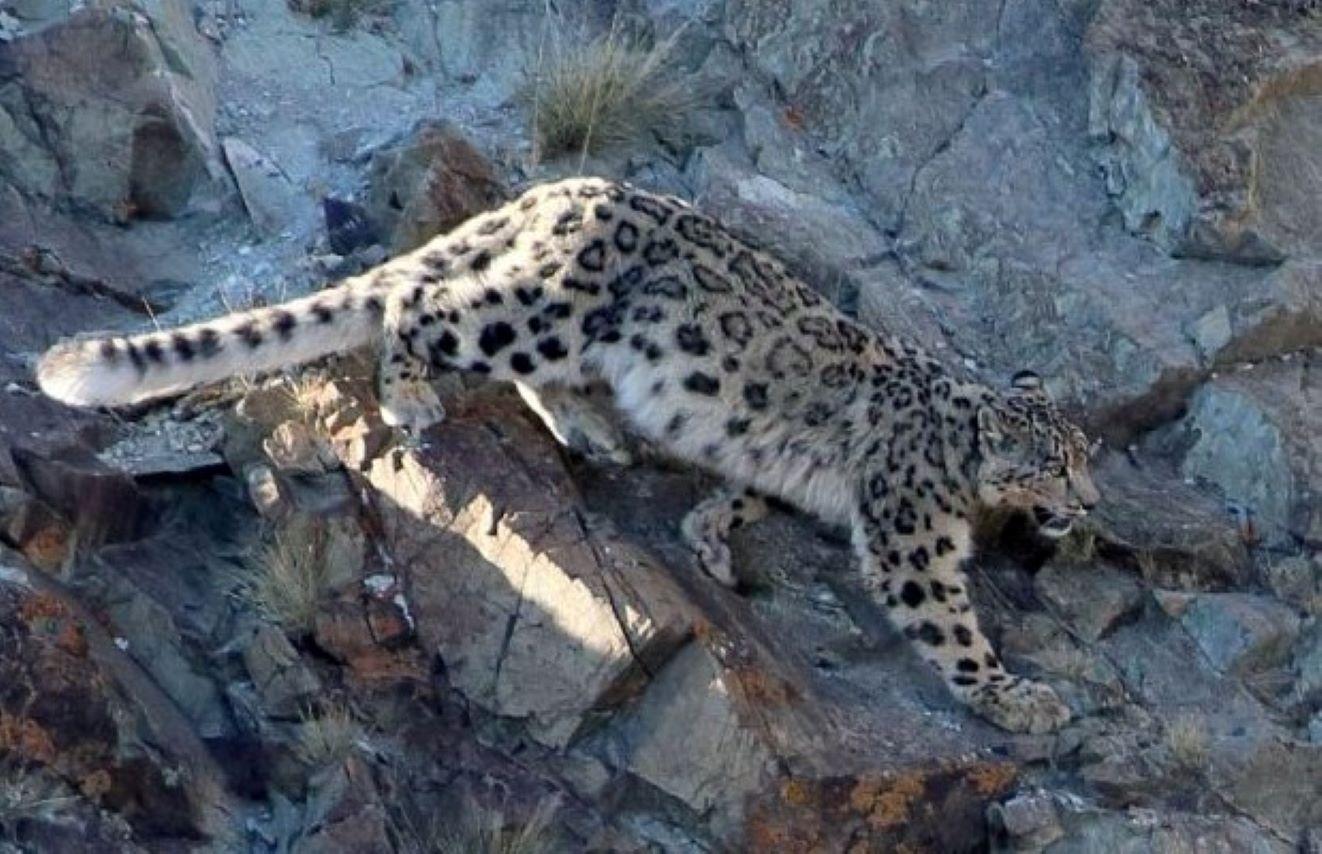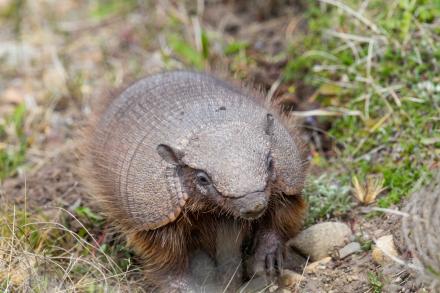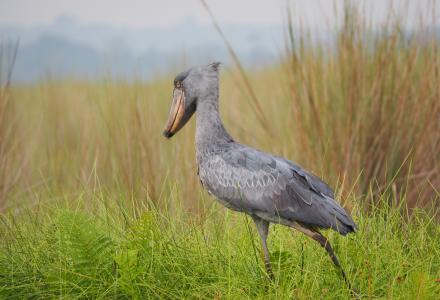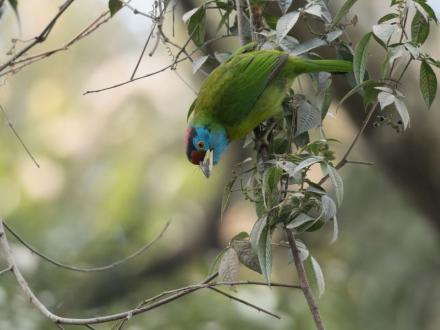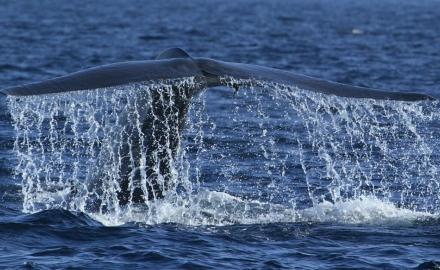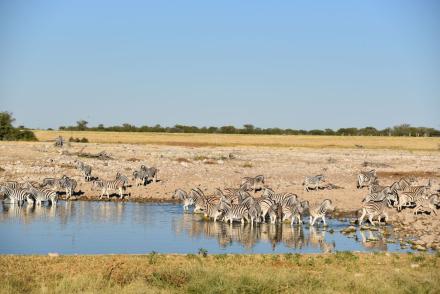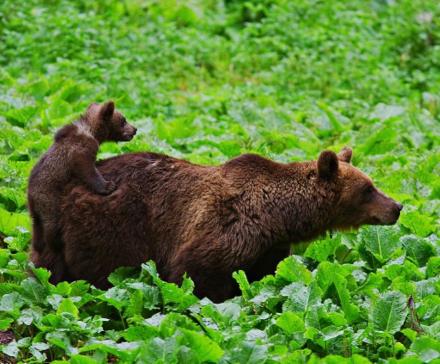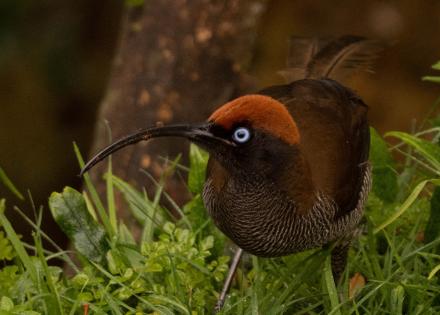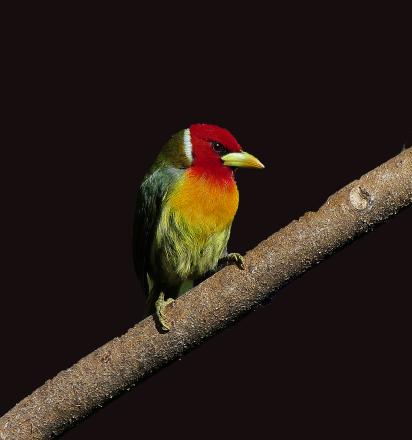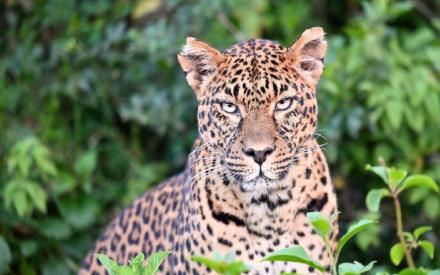Please note: In 2025, we have added a night at Hustai National Park whilst retaining same twin share price for this
tour since 2022 to provide the best possible experience and the lowest cost possible.
Our guided wildlife tour through Gun Galuut, the Altai Mountains and Hustai National Park and more.
This tour has specifically been designed for the best chance of seeing the near-mythical Snow Leopard, which has historically proved almost impossible to find in the vast, steep, rocky high mountains of Central Asia without the considerable effort of extended and difficult hikes in the thin, cold air of high altitudes whilst carrying all belongings. We will be travelling in relative comfort in purpose-built ger (yurt) camps with onsite cooks, drivers and support crews and most areas will be accessed by vehicle, allowing for greater accessibility for those with average fitness levels. The areas we will be visiting are also home to a fantastic selection of bird and rare or difficult to see mammal species, such as Saiga Antelope, Przewalski’s Horse, Argali (wild mountain sheep) and Mongolian Gazelle. The scenery is spectacular and vast and covered in wildflowers. We will also experience some of Mongolia’s unique and ancient culture, from nomadic Yak, Bactrian Camel, Cashmere Goat and sheep herding to performances by Tuvan throat singers and traditional dancers, whilst living in traditional gers (yurts) which are provided by the local community.
During this slow-paced 15-day adventure, we will be based in three main locations: Gun Galuut, the Altai Mountains and Hustai National Park with stays in a comfortable en suite hotel in Ulaanbaatar between locations. We shall spend 6 nights in the foothills of the Altai Mountains in remote Western Mongolia, venturing into the deep rocky valleys and higher altitudes (maximum 3,000 metres or 10,000 feet, but usually below) searching for Snow Leopard and other wildlife. We have a good chance of seeing at least one of the estimated 10-15 individuals that live in this isolated mountain range. We will also look for the world’s largest wild sheep, the Argali, and Siberian Ibex that roam the rocky slopes. A variety of rodents such as ground-squirrels, jerboas, gerbils/jirds, voles and Tarbagan Marmot are very common and easily seen, as are lagomorphs (close relatives of rabbits) such as hares and pikas. We may even be lucky enough to see Grey Wolf which are also possible, but even more difficult the find than Snow Leopard. We will also visit the nearby semi-desert area below our camp to search for other critically endangered mammals such as Saiga Antelope and the delicately built and pretty, Black-tailed (Goitered) Gazelle. Our second base will be nearer to the capital, yet in another beautiful natural area, the famous Hustai National Park, home of the world’s only wild horse species, the Przewalski’s Horse or Takhi and Mongolian Gazelle.
Accommodation in gers/hotel rooms for each night of the tour as described above, specialist guiding and transport in private vehicles with specialist licensed local guides and English-speaking interpreters, one group airport transfer on the first and last day of the tour and meals and activities outlined in the itinerary including National Park entry fees. Also includes domestic return Ulaanbaatar-Khovd flights.
International and domestic airfares (except the return Ulaanbaatar-Khovd flights mentioned above), airport transfers in addition to group transfer, alcoholic and non-alcoholic beverages and expenses of a personal nature (snacks, travel and medical insurance, internet, laundry, etc.) and tips for local guides and support crew. Also excludes extra charges due to factors beyond the control of the tour company such as natural disasters and governmental policy changes.
Depending on individual trip circumstances, weather, and local information, the exact itinerary may not be strictly adhered to. The guides reserve the right to make changes to the itinerary as they see fit and there may be some flexibility in the daily programme’s timing, but this will be kept to a minimum and will not significantly alter the itinerary.
Flight changes on the domestic Ulaanbaatar-Khovd flight sometimes necessitate a change from ger accommodation near Hustai to en suite hotel at Ulaanbaatar. The itinerary and meals will be adjusted to best suit these and to maximise wildlife viewing time.
Please bear in mind this primarily is not a dedicated photography tour and many of the larger mammals may not be seen at close range. However, during the tour, we will have several occasions to photograph the wildlife, scenery and wildflowers from the vehicles and on foot throughout the tour. Small mammal viewing at close range and birdwatching opportunities are excellent.
Download the itinerary brochure for the Mongolia Birds, Mammals, Culture and Amazing Landscapes tour.
Download (pdf 2.11 MB)There are terms and conditions relating to payments, cancellations, refunds, insurance and responsibility for our tours.
Here's what you'll see and do on the Mongolia Birds, Mammals, Culture and Amazing Landscapes tour.
Arrive at Ulaanbaatar and check into our hotel. We will have our welcome dinner in a traditional Mongolian restaurant offering delicious local and regional cuisine. Accommodation: Ulaanbaatar hotel (en suite rooms) Meals included: D.
This morning, we will travel to the Pallas’s Cat camp at Gun Galuut, 130 kms south-east of Ulaanbaatar. We will spend 2 nights at this remote Ger camp situated in a scenic river valley that has been purpose-built for this tour. Gun Galuut has a great diversity of ecosystems including mountain ranges, steppes, rivers, lakes and wetlands. Sixty-three mammal species, 61 bird species, 3 amphibian species and 38 fish species have been recorded in this area, including several nationally and globally-threatened species. The sought-after Pallas’s Cat occurs here and we will search for these secretive animals during the day here with the help of the knowledgeable local expert who has studied these cats for a long time. Grey Wolf, Corsac Fox, Long-tailed Ground-squirrel (Souslik), Tarbagan Marmot and an assortment of pikas, voles and jerboas are also found here, as is the globally threatened Argali mountain sheep. We will also explore the vegetation along the river near our campsite for migratory songbirds. In the past, these have been quite rewarding, rendering a variety of warblers including Pallas’s Grasshopper, Greenish, Two-barred, Dusky and Thick-billed, as well as Olive-backed Pipit, Taiga Flycatcher, and Black-faced and Pine buntings. Surprises are a possibility and may not be limited to passerines. In 2017, Mongolia’s third record of a Schrenck’s Bittern was found along this stretch of riverside. The lakes near our ger camp that dot the vast steppe are situated in a beautiful river valley. These lakes have yielded many surprises in the past including Baikal Teal, Falcated Duck, Gray-headed Lapwing, Asian Dowitcher and Gray-tailed Tattler. We may also encounter suites of common shorebirds including Eurasian Curlew, Long-toed and Red-necked stints, Pied Avocet, Pacific Golden-Plover and Marsh Sandpiper. White-naped Cranes nest in the marshes of this region and we should find this magnificent bird in family groups along with other crane species including Common and the daintier Demoiselles. The lakes also attract numerous water birds including loons, grebes, swans, ducks, scoters, gulls and as many as five species of terns. We may see Bar-headed and Swan geese, Whooper Swan, Common and Ruddy shelducks, Eurasian Wigeon, Garganey, Common Pochard, Tufted Duck and “Siberian” White-winged (Stejneger’s) Scoter. Eared and Horned grebes and Arctic (Black-throated) Loon are often spotted in these waters. Mongolian Gull and Black-Headed Gull are most common here, and Common and Gull-billed Terns are regularly observed in these realms; we may also find larger Caspians and all three marsh terns: Whiskered, Black and White-winged. As we drive across the shortgrass steppe we may find several species of larks including Asian Short-toed, Horned and Mongolian larks, Isabelline and Northern wheatears, and Richard’s and Blyth’s pipits. We will particularly be on the lookout for the sandy colored Pere David’s Snowfinch that inhabits the steppes. Raptors will be represented by Upland Buzzard, Steppe Eagle, Cinereous Vulture, Black-eared Kite, Eastern Marsh Harrier, and Saker and Amur falcons. The rocky slopes are home to Rock Sparrow and Twite, while Pallas’s Sandgrouse could be skulking anywhere in the area. Accommodation: Ger camp at Gun-Galuut (shared facilities) each night. Meals included: B, L, D each day
We will leave Gun Galuut early today to allow time to visit Gorkhi-Terelj National Park which is the third largest protected area in Mongolia. Here the high granite mountains have been carved into spectacular shapes by the wind and are forested on their northern slopes, with wildflower meadows in between. The scenery and wildflowers here are amazing, with blue bellflowers (Campanula and Adenophora), Larkspurs (Delphinium) and gentians (Gentiana) vying with pink carnations (Dianthus) and vetch for attention. White Edelweiss (Leontopodium sp), yellow Cinquefoil (Potentilla) and verdant long green grass, with an understorey of Wolfsbane (Aconitum), wild Strawberries (Fragaria) and fungi in the forest complete the picture-a stark contrast to the steppe of the Altai Mountains we will visit next. Bird species found here include Cinereous Vulture (which nests here), Spotted Nutcracker, Coal, Willow, Great and Long-tailed Tits, Yellow-browed Warbler, Eurasian Nuthatch and Red-throated Thrush. Boar, Red, Roe and Musk Deer, European Elk, Red Fox, and even Wolve, Wolverine, Brown Bear and Eurasian Lynx have been recorded here. We will also visit the 40-metre-tall stainless steel statue of Genghis Khan on horseback, before returning to Ulaanbaatar to repack for our next adventure in the Altai Mountains. Accommodation: Ulaanbaatar hotel (en suite rooms) Meals included: B, L, D.
This morning, we will take a domestic flight to Khovd, from where we then drive to our Ger camp where we will stay for the next 6 nights. Our camp is located in the foothills of Jargalant Khairkhan Mountain (an isolated extension of the Altai Mountains) overlooking semi-desert steppes. The facilities here are shared and basic, but considering the remoteness, are very comfortable and clean. The camp is operated by members of the local community and our hosts are volunteer rangers recognized by the local authority and partners of the WWF Snow Leopard project. Our local support team are keen to provide everything we need to maximise our comfort here. During this time, we probably won’t meet any other human being apart from our teammates, our local crew and perhaps a few herders. Accommodation: Ger camp in the foothills of the Altai Mountains, western Mongolia (shared facilities). Meals included: B, L, D.
The next 5 days will find us searching primarily for the elusive Snow Leopard as one of our main priorities. We have timed our trip to match the period when the cats are most likely to be seen hunting or guarding their prey. There is no guarantee of sightings, but by working with the local support crew in the best locations, most tour groups are fortunate to see at least distant views of this majestic animal during their visit. The terrain here is considerably easier to negotiate than in their other habitats, where the conditions are generally much harsher (higher altitude, lower temperatures, difficult terrain and limited access involving long hikes carrying all gear and sleeping in tents).
Our experienced and skilful drivers will take us as close as possible to the observation sites in 4x4 vehicles, which provides access for those with average mobility and fitness (although some of the terrain is rocky, uneven and steep). There will also be opportunities to take short or medium length walks in the valleys and steppes. As we have plenty of time, we will be able to proceed at a speed that is comfortable for everyone. This tour is planned to be slow paced with plenty of time for
Terelj NP. T Cochran
Snow Leopard. H Brehm
everything. A team of local scouts will be on the mountain most of the time looking for Snow Leopard. They successfully locate one or more Snow Leopards during almost each tour, and we hope one will be in an easily accessible area for us all to see. They are also in contact with local shepherds and if one of their animals is killed by leopards, they will immediately report it to our local team. This is important for conservation reasons and a great help to us. We will also scan the mountainsides during visits to the summit. To find a Snow Leopard needs patience, but it is in fact a special aspect of the holiday: it is a very slow-paced activity that allows us to admire the breath-taking scenery, incredible alpine flora and the highlights of the avifauna without haste. There will always be things to look at such as the flocks of White-winged Snowfinches and Red-billed Chough, the beautiful Guldenstadt’s Redstart, Tarbagan Marmots and Argali sheep or Siberian Ibex with their amazing ability to climb almost vertical cliffs. Raptors are common here and include Golden and Steppe Eagle, Black-eared Kite and Saker Falcon and Cinereous, Bearded and Himalayan Griffon Vulture are often seen as they scan the pastures for prey or carcasses, the latter most probably left by the Snow Leopards.
The odd-looking Saiga Antelope is now critically endangered, and the Mongolian subspecies (Saiga tatarica mongolica) can be found in the flat semi desert steppe a few kilometres from our base. Another highlight is the abundance and variety of rodents and lagomorphs in and around the campsite. Pallas’s Pika are abundant around the campsite; Midday Jird and Mongolian Gerbil are also common, and at night, tiny kangaroo-like Jerboas can be seen jumping around the campsite. Their long ears and tails make them very special, unique animals to watch. We will also visit a huge lake and the adjacent wetland nearby where we will see a large range of waterbirds and shorebirds such as Whooper Swan, Dalmatian Pelican Pallas’s Gulls, Whiskered and Gull-billed Terns, White-headed Ducks, Red-crested and Common Pochards. The nearby grasslands provide perfect habitat for many passerines including Asian Short-toed Lark, Richard’s Pipit, Western Yellow and Citrine Wagtail, and Pallas’s Bunting. Other avian Mongolian highlights include Pallas’s Sandgrouse and Mongolian (Henderson’s) Ground-jay which also occur very near to our campsite.
On one evening, we will also organize a short performance by a local cultural group who will demonstrate their mastery of Tuvan throat singing and traditional instruments. This is a highlight of the tour and allows us to appreciate the region’s ancient and rich cultural and spiritual heritage. We will also visit the site of some ancient Petroglyphs. The Petroglyphs of the high mountain glacier-carved valleys of the Mongolian Altai represent the most complete and best-preserved visual record of human prehistory and early history of the region at the intersection of Central and North Asia. The earliest images that we will view date back to the Late Pleistocene 11,000+ years ago), when the paleoenvironment shifted from dry plains to forested steppe and the valleys provided an ideal habitat for hunters of large wild game. Accommodation: Ger camp in the foothills of the Altai Mountains as for day 2 (shared facilities) each night. Meals included: B, L, D each day.
Leaving this magical placebehind, we will fly back to Ulaanbaatar to stay overnight before spending 2 nights in Hustai (also known as KustainNuruu) National Park, home to the successfully reintroduced Mongolian wild horse, the Takhi or Przewalski’s
Horse. Over the next two days, we will take short walks inthe rolling hills searching for Long-tailed Ground-squirrel (Souslik) and Tarbagan Marmot, but the main focus will be to admire the beauty of the world’s only true wildhorse species. We may also see Mongolian Gazelle, Argali and Red Deer today. Amur Falcon may be found in the trees in the valleys, while Lesser Kestrels hunt on the hillsides and Golden Eagles patrol the skies. Some places are productive for Daurian Partridge, and the wildflowers we may see here include Edelweiss (Leontopodium ochroleucum) and Gentians (Gentiana triflora). There will also be an opportunity to visit some ancient (1,800-yearold)
Ongot (Turkish) carved rock monuments and Balbal stones, and even older (1,2000 year old) rectangular tombs in the park. Accommodation: Ulaanbaatar (night 11) and Ger camp in Hustai National Park (shared facilities) nights 12 & 13. Meals included: B, L, D each day.
Today if time allows, we may visit a wetland where White-naped Crane is possible along with Swan Goose, Black Stork, Eastern Marsh Harrier, Citrine and Eastern Yellow Wagtail,before making our way back to Ulaanbaatar, where we spend the last night of our tour. We will have a final dinner together this evening. Accommodation: Hotel in Ulaanbaatar (en suite rooms). Meals included: B, L, D.
This morning, we will provide a group transfer to Ulaanbaatar airport for our
departure to onward destinations. Accommodation: none. Meals included: B.
